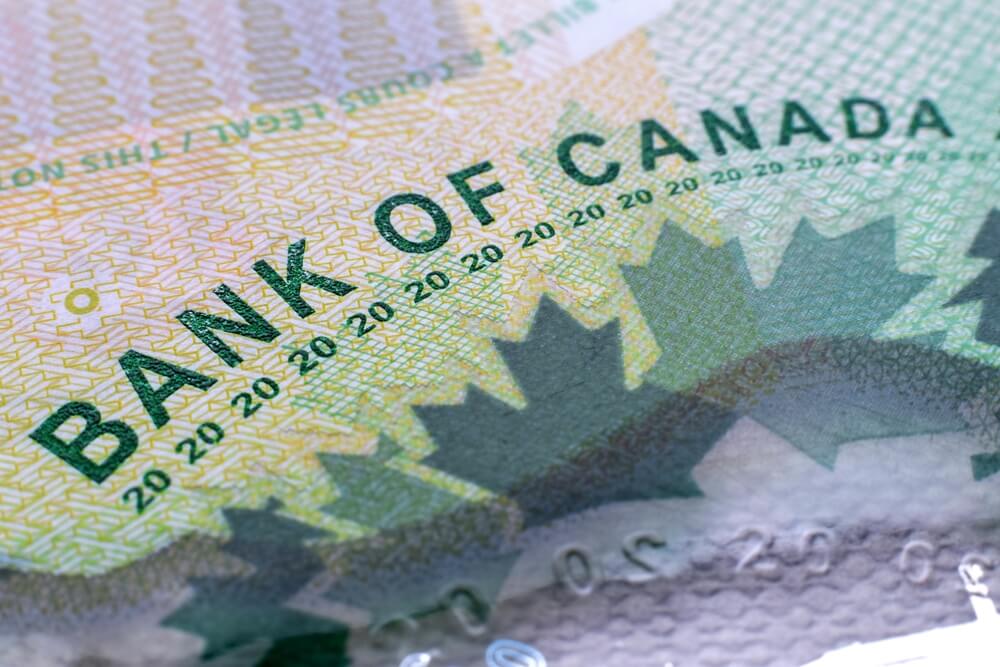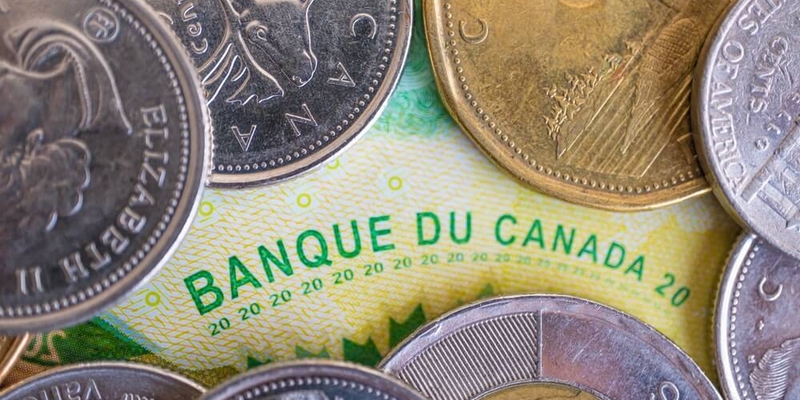Alberta Home Insurance Calculator
Easily estimate your Alberta home insurance within minutes
Compare Alberta home insurance quotes from providers you trust





How is home insurance calculated in Alberta?
Home insurance calculations in Alberta are based on multiple different factors – and each insurer has their own way of making those calculations. That’s why when you go around shopping for home insurance, you’ll find different rates.
However, it’s important to stress that insurers don’t assign their rates at random. There are certain basic factors that more or less all of them consider, including these:
- Cost of rebuilding your home: The cost of building a home from the ground up factors in the home’s square footage, number of floors, overall construction as well as material and labour costs in your area. The higher the cost, the higher the premium.
- Piping: Older pipes, especially those that are galvanized or made of lead, are more likely to leak or crack, which can cause water damage to your home. Because of the risk they pose, your premiums can be much higher than they should be. If your home is old, consider switching to either copper or plastic pipes.
- Electrical wiring: If you have aluminum or knob-and-tube electrical wiring, your rates will be higher, as outdated wiring poses a high risk of fire. In fact, before insuring you, your provider may ask you for a guarantee that your home doesn’t include such wiring or inspect it to make sure the wiring is safe. Same applies if your home has fuses instead of breakers or an electrical service that’s below 100 amps, as they pose a higher risk of fire too.
- Roof’s age: If you haven’t renovated your roof in over 20 years, it might already be suffering from issues such as poor insulation and leaks, both of which can cause severe damage to the rest of your home. As a result, insurers may cover no more than 25% of your roof’s replacement cost, should it cause damage. Your premiums will be high as well.
- Renovations: If you happen to renovate your home, you may inadvertently increase its value, and by extension, your home insurance rates. This doesn’t mean you shouldn’t renovate – just be mindful of the impact this might make.
- Location: Your location may determine your rates. Insurers group their rates by mailing districts – designated by the first three characters of your postal code (known as a ‘forward sortation area,’ or ‘FSA’). For example, if you happen to live in a high-crime district, where break-ins are common, then your rates will be higher. The same applies to weather-related events, such as hurricanes and tornadoes. Alberta in particular is susceptible to freezing temperatures, which can make your rates higher.
- Proximity to fire halls and hydrants: This is related to location, but in a very specific way. If your home is far away from a hydrant or fire station, it’s more likely to suffer severe damage or total loss due to fire. Most homes in urban areas don’t suffer from this issue, but if you’re located in a rural area, then this might make your rates higher.
- Claims history: The more times you file a claim, the higher your rates will be. This is because filing claims in the past increases your likelihood of filing claims in the future. Your best bet is to limit your claims to major events only. Avoid filing claims for small maintenance concerns, such as minor pipe leaks or other forms of easily repairable damage.
How to get your Alberta home insurance quotes on RATESDOTCA
Ready to compare quotes and save?
Tell us about your home
Answer a few basic questions about your home. It won't take long!
Compare your quotes
See quotes from top insurance companies side by side.
Choose the right coverage
Find the right protection for your home and everything in it.
Secure your rate
Connect with the provider and secure your rate.
How to get an estimate for your Alberta home insurance
To get an estimate, consider checking out RATESDOTCA’s Alberta home insurance calculator, which you can access from just about any page on this website, including this page. It’s easy to use, as all you need to do is follow these steps:
Step 1: Tell us your address
After selecting whether you want home, condo or tenant insurance, type in the following:
- Your postal code
- Your home address
Step 2: Tell us about yourself and your property
Next, give us a few details about yourself and your property, including:
- Your name
- Who occupies the residence
- When you want your policy to start
- Date of birth of the eldest applicant
- When you moved into the property
Step 3: Tell us about your past and current insurance policies
If you have an active home insurance policy, provide the following details:
- How long you have had insurance
- How long you have been insured with your current provider
- How many claims you have made in the last five years (if any)
- How many cancellations you have had due to non-payment (if any)
If you don’t have a home insurance policy at the moment, but had one in the past, specify the following:
- How many claims you have made in the last five years (if any)
- How many cancellations you have had due to non-payment (if any)
Step 4: Select your discounts
To get discounts on your home insurance policy, answer the following questions:
- Are you open to bundling multiple policies with the same insurer?
- Does your property have a monitored fire alarm?
- Does your property have deadbolt locks?
- How many fire extinguishers are on your property?
- Does your property have a monitored burglar alarm?
- Does your property have a sprinkler system?
- Are the occupants non-smokers?
- How many mortgages do you have on the property?
Step 5: Get your rates
Lastly, provide us with your email address and phone number to access your free home insurance rates from the providers in our digital marketplace.
What people say about our quotes

Based on 6,450 reviews

Fast efficient and fair
Quick quotes. Great rates. Easy to process
Trinity

Comparing Travel Insurance …
This was the only site I could find that allowed me to compare different travel insurance options. I particularly liked the ability to look at sample documents.
Toronto

Amazing
Very helpful and easy to use
Safe travels

Easy quick selection of rates
Easy quick selection of rates
J K

Great help in finding the best rate!
Great help in finding the best rate! Thanks a lot!
Ruthielyn opina

I like how I can quickly I can select…
I like how I can quickly I can select travel insurance. The web site had an issue earlier but seemed to correct itself.
Dennis
Recent Alberta home insurance quotes

Recent home Insurance Quote from Airdrie, AB
Duplex 1,052 sq ft
July 20, 2025
Cheapest Quote
$ 130 / month
$ 1,565 / yearAverage Quote
$ 362 / month
$ 4,340 / yearSavings
$ 231 / month
$ 2,772 / year
64 %
Recent home Insurance Quote from Okotoks, AB
Detached 2,397 sq ft
July 20, 2025
Cheapest Quote
$ 207 / month
$ 2,485 / yearAverage Quote
$ 333 / month
$ 4,001 / yearSavings
$ 126 / month
$ 1,512 / year
38 %
Recent home Insurance Quote from Spruce grove, AB
Detached 1,605 sq ft
July 20, 2025
Cheapest Quote
$ 119 / month
$ 1,422 / yearAverage Quote
$ 518 / month
$ 6,210 / yearSavings
$ 399 / month
$ 4,788 / year
77 %
Home insurance quotes are compared from Apollo Insurance, CAA, Economical Insurance, Pembridge, Square One Insurance, and SGI
Mandatory and optional home insurance coverage in Alberta
Unlike auto insurance, home insurance isn’t technically mandatory in Alberta. However, if you’re like most people, you’ll likely need to take out a mortgage to buy a home, and most mortgage lenders require homeowners to purchase insurance. So, in that sense, it is mandatory.
With that in mind, here’s everything you need to know about home insurance coverage in Alberta:
Types of home insurance in Alberta
There are four types of home insurance policy you can get in Alberta. They differ primarily by the amount of coverage they offer and by price. Though their nomenclature differs from insurer to insurer, they usually boil down to the following:
- Basic: Also referred to as ‘named perils,’ this is the cheapest type of coverage you can purchase, which makes it incredibly limited. It protects your property and its contents only against the perils listed in your policy. So, if fire, for instance, is not listed, then your home is not covered for it.
- Broad: This is essentially a downgraded version of the comprehensive coverage. It protects your property from anything that isn’t listed as an exception in your policy. In this case, if fire is not listed, then your property is protected from it. Note that when it comes to your possessions, they are only protected from the perils named in the policy, same as under the basic coverage.
- Comprehensive: Also known as ‘all perils,’ this is your full coverage. It protects your property and possessions from all perils, other than a handful of named exclusions. If, for example, fire is named as an exclusion, then you’re not covered for it. This is the most expensive type of home insurance you can buy in the province. However, this doesn’t mean it covers everything. If you want additional coverage, then you might have to purchase it separately.
- No-frills: This coverage is even more bare-bones than the basic one and is meant for special cases only. If your home is old, for instance, and highly likely to suffer damage due to outdated plumbing or poor structural integrity, then it may not qualify for regular insurance, such as basic, broad or comprehensive. That’s why no-frills coverage exists. It’s especially useful when you require home insurance for mortgage purposes. However, it should be a temporary measure – until you address the issues that prevent you from getting proper coverage.
What gets covered
Whether you go with basic, broad or comprehensive coverage, it must cover the following:
- Property: This usually includes every structure on the property, such as the home itself, guest house and other buildings. The covered perils will depend on your policy type – whether it’s basic, broad or comprehensive. However, don’t take it for granted that all your structures will be covered. Consult with your insurer to make sure.
- Contents: This entails your personal belongings, such as electronics, furniture, clothing and so forth. Note that some items may be too pricy to be covered by regular insurance, even if you buy a comprehensive policy. Items like fine art, jewelry and collectibles may require policy add-ons to be fully protected. To ensure all your items are covered, evaluate everything you own and consult with your insurer.
- Additional living expenses: If you become temporarily displaced due to an insurable event, this will cover your living expenses while away from home. For example, if you’re forced to live in a hotel, your insurance provider may pay for both your room and groceries for the length of your stay (or up to a certain amount).
Liability coverage
Your liability coverage would usually cover these items:
- Personal liability: This will protect you if someone visiting your property gets injured.
- Medical payments: If you accidentally injure someone on your property, this will pay for the injured person’s medical expenses for up to a year – from the date of the injury.
- Property damage: If you, or minors in your care (under 12 years), cause accidental loss or damage to someone’s property, then this will protect you.
Note that if you do any of the above with intention, then your liability coverage will become void.
Commonly covered perils
The most commonly covered perils in Alberta – whether you go for basic, broad or comprehensive coverage – will typically include the following:
- Fire: No matter what causes the fire, your insurance provider will cover the costs of rebuilding or repairing your property as well as recovering your belongings.
- Lightning: Should lightning strike your property, it could damage the wiring in your walls as well as break your appliances and electronics. This will cover the costs of repairing and/or replacing whatever ends up damaged.
- Theft and vandalism: If your home happens to get robbed or vandalized, this will pay for the replacement of the stolen items.
- Water damage: This pays for the damage to your property and its contents, if caused by water leakage from indoor plumbing, heating, air conditioning, sprinklers and similar appliances inside or outside the house. The tricky part is understanding what’s excluded. Most coverages exclude sewer back-up and overland flooding – which you would be right to assume fall under this – so be sure to confirm what is and isn’t covered with your insurer.
- Hail and wind: If wind or hail damages your property or its contents in any way, this will pay for them. This includes damage from flying debris, falling trees and branches (only if caused by hail or wind).
- Falling objects: This protects your property and belongings from falling objects, including space debris and space craft. There are exceptions, such as objects moved by landslides or snowslides. Confirm with your provider, so you know what’s covered.
Home insurance add-ons in Alberta
If you happen to realize that you need additional coverage, you can purchase it in the form of ‘add-ons’ or ‘endorsements.’ Here are some of the most common ones:
- Overland flooding: If your home gets flooded as a result of overflowing water from a river, stream, lake, thawing snow or another body of water, this add-on will cover you. Alberta isn’t immune to overland flooding, as there have been some as recently as summer 2023.
- Sewer back-up: This type of flooding occurs due to backed up sewage pipes, toilets, drains or showers. They typically get backed up when too much rainwater or melted snow enters the sewer system at once. If sewer back-ups are a concern in your area, be sure to talk to your insurance provider about them.
- Earthquake: Though they don’t happen often, earthquakes do occur in Alberta. So, if you’re worried about them or other ‘earth-based’ perils, such as landslides, snowslides or volcanic eruptions, talk to your provider to buy yourself extra coverage.
- Windstorm: A strong enough windstorm can damage your home’s structure, possessions and windows, in addition to showering your property in debris. Depending on your provider and policy, you may have this covered without needing the add-on, but it’s worth inquiring your provider about it all the same.
- Mass evacuations: Should a major peril like flooding or wildfires result in mass evacuations, this will protect your accommodations and food, while you’re away from home.
- Expensive items: If you own pricy things like jewelry, collectibles and/or artwork, then you may need extra coverage for them. Do an inventory of all your possessions, while assigning monetary value to them. After that, talk to your provider to find out if you need extra coverage.
What is not covered by home insurance in Alberta
Though home insurance can be extensive, it won’t protect you from everything. That’s because some things are strictly the responsibility of the owner, including these:
- Mold: Given that mold occurs slowly, as a result of pre-existing conditions such as extreme humidity – there is usually enough time for you to prevent it. Home insurance is mostly meant to cover sudden and largely unforeseen events, such as fires, floods and robberies. Mold isn’t one of them.
- Pest infestations: Like mold, pest infestations, including mice, bedbugs, cockroaches and termites, are not sudden. So, if they cause any damage, it’s highly unlikely that your home insurance will cover it. That’s why, as soon as you notice an infestation, you should contact the appropriate service to help you resolve the issue (this service shouldn’t be your insurer).
- Deliberate damage or injuries: If you purposely damage your own property or possessions, your insurance company will not cover the costs. In fact, if you attempt filing a claim for that, you may be accused of insurance fraud, which is illegal. The same applies to your liability coverage if you decide to intentionally injure someone on your property.
Choosing the right home insurance coverage in Alberta
If you’re worried about overpaying for your home insurance coverage, here’s what you can do to save money:
- Evaluate your needs: To get the home insurance coverage that meets your needs, you first need to know what those needs are. For instance, how much liability coverage do you need? Is it $1 million? Or $2 million? If you have a big family more liability coverage might be better – but the decision is ultimately up to you. Furthermore, if you own expensive items such as jewelry or artwork, you might want to get them covered through an endorsement.
- Seek help: Given that home insurance can be complex, and each person’s needs are unique, there is no shame in turning to industry experts for help. Start by checking out RATESDOTCA’s home insurance guides to answer some of your more basic questions. For information that’s more specific to you and your property, get in touch with an actual person – either an insurance agent or an insurance broker, such as the ones at Scoop.
- Consider your deductible: Depending on how much you want to pay for your premium, you may want to decide how high or low your home insurance deductible should be. The higher the deductible, the less you have to pay in premiums. The trade-off is that you have to pay more when filing a claim.
- Assess your property: Take a long hard look at your property to determine whether it needs any work. If it has structural issues, such as an old roof or outdated plumbing or electrical system, you might want to update those to avoid paying exuberant premiums for your home insurance.
- Don’t forget about your car insurance: If you have auto insurance or other kinds of insurance, consider bundling them with your home insurance under the same provider. This can provide significant savings on your premiums.
- Check your security: Does your home have security measures in place, like burglar alarms, to protect your home from potential thefts and break-ins? If not, consider putting them in, as they can lower your premiums.
- Compare quotes from multiple insurance: Don’t just look at one insurance agency – look at several of them. As many as possible. You can do so by contacting a broker, or you can do so right now by using RATESDOTCA’s Alberta home insurance calculator, which will provide you with free quotes from multiple providers.
Frequently asked questions about home insurance in Alberta
Got more questions about the Alberta home insurance calculator? We got answers.
What’s the average home insurance in Alberta?
According to the 2022 RATESDOTCA Home Insuramap data, the average annual home insurance premium in Alberta is $2,339. It’s a great deal higher than Ontario’s annual premium of $1,487.
Home insurance rates have seen some increases in Alberta over the last few years. Climate change remains one of the biggest driving factors behind this, as it has led to a higher number of natural disasters, such as floods, tornadoes and wildfires. Crime rates have gone up as well in certain parts of the province, such as Calgary and Edmonton, which is bound to have an impact on premiums (and not in a good way).
How can I find the cheapest home insurance in Alberta?
To find the cheapest home insurance in Alberta, you’d have to consult either with an insurance broker or use a quote comparison website such as RATESDOTCA, where you can pull quotes from multiple insurance providers. To use it, just enter a few details about yourself and your property into RATESDOTCA’s home insurance calculator, and you should start seeing results immediately.
What is an insurance deductible?
A home insurance deductible is the amount you’re willing to pay out of pocket when filing a claim. This lets you share the risk of insuring your home with your insurance provider. For instance, if you file a claim for $5,000, and your deductible is $1,000, then your insurer will cover you for $4,000. The rest will come out of your pocket. In other words, the higher the deductible, the more you have to pay for your claim upfront. The trade-off is that your premiums will be lower.
The value you set for your deductible will depend heavily on how much risk you’re willing to take on versus how much you’re willing to pay in premiums. Since insurance premiums are based on your specific circumstances, you should consult with your insurance agent or broker to determine what deductible is right for you.











